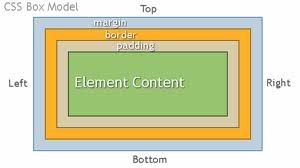The <body> element contains all the content to your document. The <body> element comes after the document header and must be closed before closing the document root, <html>.
Listed below are the most common attributes you can use for this element:
- alink – sets a color value or a predefined color name of the hyperlinks when they’re being clicked.
- background – provides the Uniform Resource Locator (URL) of an image file to be used as web browser’s background.
- bgcolor – sets a color value or a predefined color name of the web browser’s background.
- bottommargin – sets the bottom margin in pixels (px) using Internet Explorer or Safari web browser.
- class – provides the class or classes of the body. This attributes is used to identify the name of the style class or classes to be used for rendering.
- id – provides a unique name for the body.
- lang – provides the language in which the enclosed content is coded.
- leftmargin – sets the left margin in pixels (px) using the Internet Explorer or Safari web browser.
- link – sets a color value or a predefined color name of the hyperlinks to those haven’t been visited.
- marginheight – sets the margin height in pixels (px) using Mozilla web browser.
- marginwidth – sets the margin width in pixels (px) using Mozilla web browser.
- · Rightmargin – sets the right margin in pixels (px) using Internet Explorer or Safari web browser.
- style – provides a cascading style sheet (CSS) properties to the element.
- text – sets a color value or a predefined color name of the text in the document.
- title – provides a text title for the body. Most web browser displays the value of the title as a “tooltip”.
- topmargin – sets the top margin in pixels (px) using Internet Explorer or Safari web browser.
- vlink – sets a color value or a predefined color name of the hyperlinks to those has been visited.
Here’s another example that we’ve already seen. Note the use of the <body> element:
<!DOCTYPE> html PUBLIC "-//W3C//DTD XHTML 1.0 Transitional//EN"
"http://www.w3.org/TR/xhtml1/DTD/xhtml1-transitional .dtd">
<html xmlns="http://www.w3.org/1999/xhtml">
<head>
<meta http-equive="Content-Type" content="text/html;
charset=utf-8" />
<title>Document Body Example</title>
"http://www.w3.org/TR/xhtml1/DTD/xhtml1-transitional .dtd">
<html xmlns="http://www.w3.org/1999/xhtml">
<head>
<meta http-equive="Content-Type" content="text/html;
charset=utf-8" />
<title>Document Body Example</title>
</head>
<body>
<h1>
Document Body Example
</h1>
</body>
</html>
Here’s an example to set a top margin of 100 pixels and a left margin of 200 pixels to a document that can be viewed in Internet Explorer or Safari web browser:
<!DOCTYPE> html PUBLIC "-//W3C//DTD XHTML 1.0 Transitional//EN"
"http://www.w3.org/TR/xhtml1/DTD/xhtml1-transitional .dtd">
<html xmlns="http://www.w3.org/1999/xhtml">
<head>
<meta http-equive="Content-Type" content="text/html;
charset=utf-8" />
<title>Document Body Example</title>
"http://www.w3.org/TR/xhtml1/DTD/xhtml1-transitional .dtd">
<html xmlns="http://www.w3.org/1999/xhtml">
<head>
<meta http-equive="Content-Type" content="text/html;
charset=utf-8" />
<title>Document Body Example</title>
</head>
<body topmargin=”100” leftmargin=”200”>
<h1>
Document Body Example
</h1>
</body>
</html>
Here’s an example to set margin height of 100 pixels and a margin width of 200 pixels to a document that can be viewed in Mozilla web browser:
<!DOCTYPE> html PUBLIC "-//W3C//DTD XHTML 1.0 Transitional//EN"
"http://www.w3.org/TR/xhtml1/DTD/xhtml1-transitional .dtd">
<html xmlns="http://www.w3.org/1999/xhtml">
<head>
<meta http-equive="Content-Type" content="text/html;
charset=utf-8" />
<title>Document Body Example</title>
"http://www.w3.org/TR/xhtml1/DTD/xhtml1-transitional .dtd">
<html xmlns="http://www.w3.org/1999/xhtml">
<head>
<meta http-equive="Content-Type" content="text/html;
charset=utf-8" />
<title>Document Body Example</title>
</head>
<body marginheight=”100” marginwidth=”200”>
<h1>
Document Body Example
</h1>
</body>
</html>







0 comments:
Post a Comment